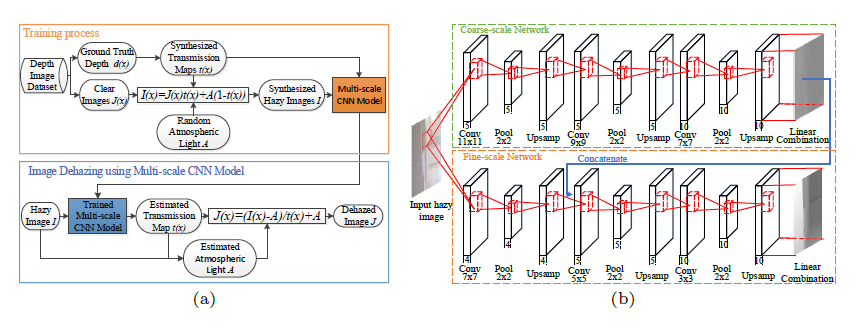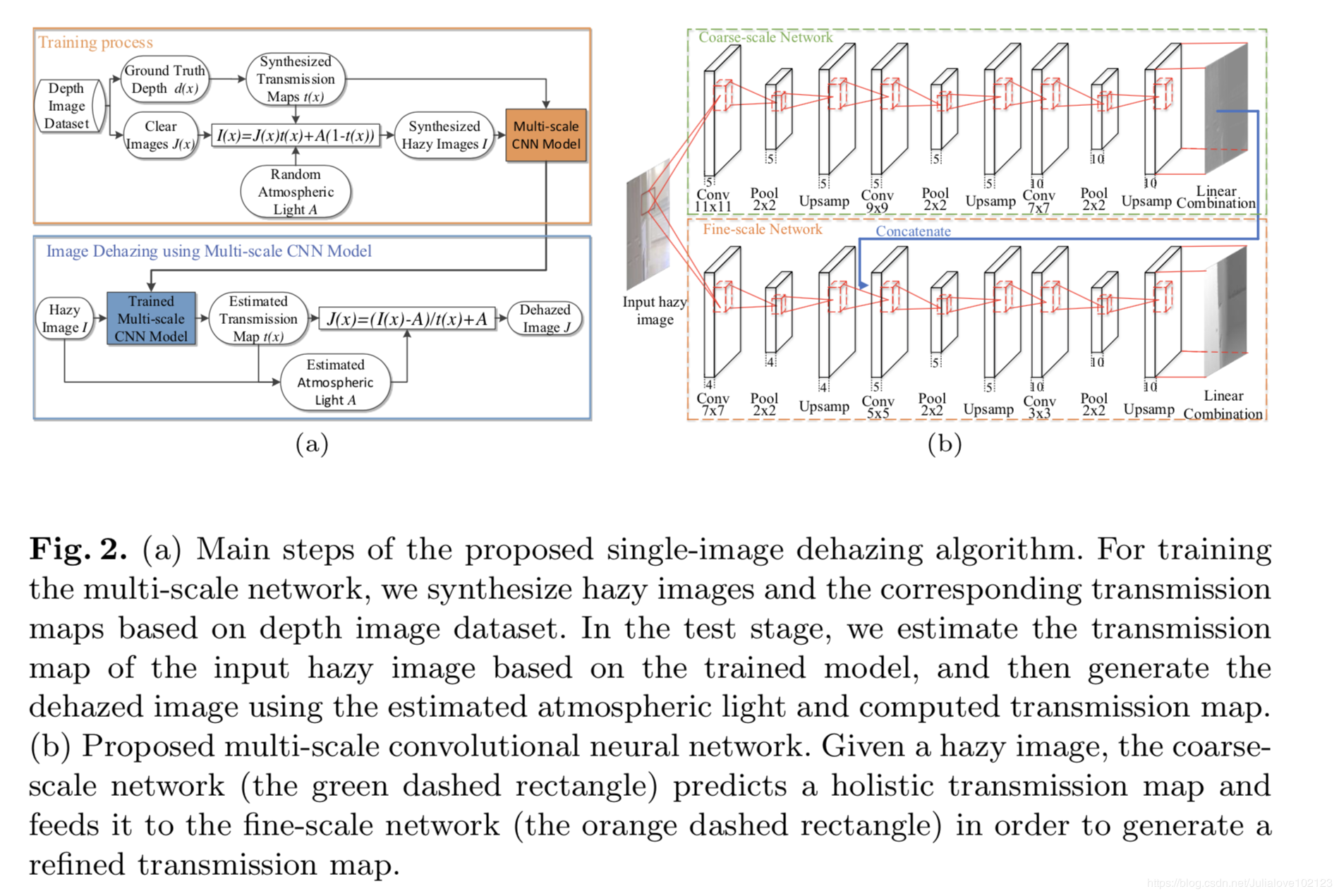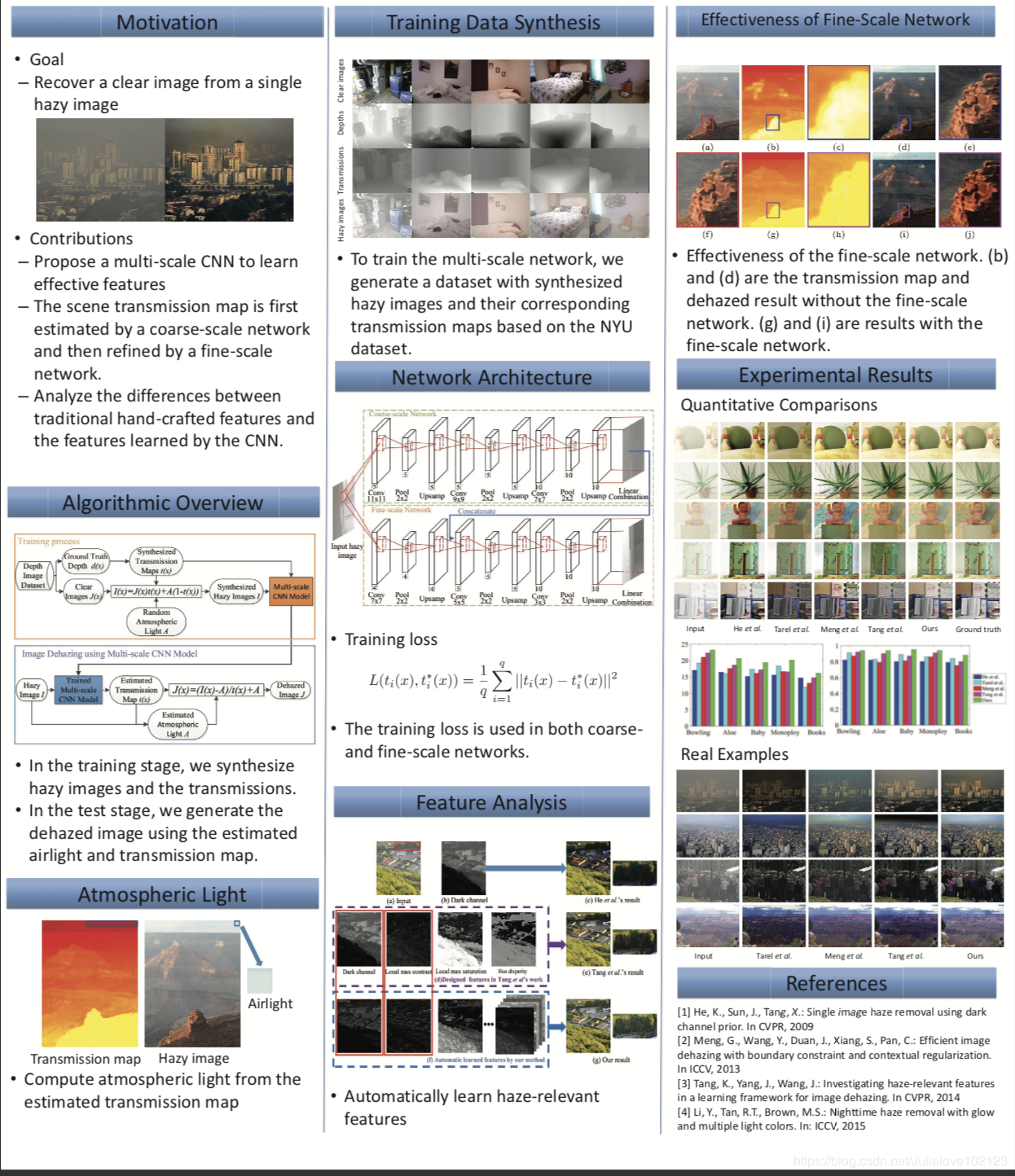【论文笔记】MSCNN: Single Image Dehazing via Multi-Scale Convolutional Neural Networks
现存方法缺点:The performance of existing image dehazing methods is limited by hand-designed features, such as the dark channel, color disparity and maximum contrast, with complex fusion schemes.
提出的方法:In this paper, we propose a multi-scale deep neural network for single-image dehazing by learning the mapping between hazy images and their corresponding transmission maps. The proposed algorithm consists of a coarse-scale net which predicts a holistic transmission map based on the entire image, and a fine-scale net which refines results locally. To train the multi-scale deep network, we synthesize a dataset comprised of hazy images and corresponding transmission maps based on the NYU Depth dataset. Extensive experiments demonstrate that the proposed algorithm performs favorably against the state-of-the-art methods on both synthetic and real-world images in terms of quality and speed.
项目主页:https://sites.google.com/site/renwenqi888/research/dehazing/mscnndehazing
论文下载:https://drive.google.com/open?id=0B7PPbXPJRQp3TUJ0VjFaU1pIa28
代码下载:https://drive.google.com/open?id=0B7PPbXPJRQp3TUJ0VjFaU1pIa28
暗通道模型+深度学习
动机:现有图像去雾方法的性能受到手工设计的特征的限制(先验),例如暗通道,颜色差异和最大对比度,以及复杂的融合方案
对比方法: Tan(2007)、Fattal(2008)、DCP、 BCCR(Meng)、Tarel、Tang
方法:通过学习模糊图像与其相应的传输图之间的映射,提出了一种用于单图像去雾的多尺度深度神经网络。 所提出的算法包括粗尺度网络,其基于整个图像预测整体透射图,以及精细尺度网络进行局部性的优化。
MSCNN:
- 提出一个多尺度的CNN来学习有效的特征(t);
- 首先由粗尺度网络估计场景传输图,然后由精细尺度网络细化;
- 分析传统方法提取的特征与CNN学习的特征之间的差异;
优点:
- 时间很快
缺点:
- 对夜晚雾情况处理不好
t(x):通过最小化预估的t(x)与真实图像的t(x)之间的MSE;具体步骤见Fig2(b)
A:通过在透射图t(x)中选择0.1%最暗像,在这些像素中,选择相应的雾图像I中具有最高强度的像素作为大气光。
提到了他们的速度很快:
海报:
- 原文作者:jchen
- 原文链接:http://jchenTech.github.io/post/%E5%9B%BE%E5%83%8F%E5%A4%84%E7%90%86%E4%B8%8E%E6%B7%B1%E5%BA%A6%E5%AD%A6%E4%B9%A0/%E8%AE%BA%E6%96%87%E7%AC%94%E8%AE%B0MSCNN/
- 版权声明:本作品采用知识共享署名-非商业性使用-禁止演绎 4.0 国际许可协议进行许可,非商业转载请注明出处(作者,原文链接),商业转载请联系作者获得授权。





